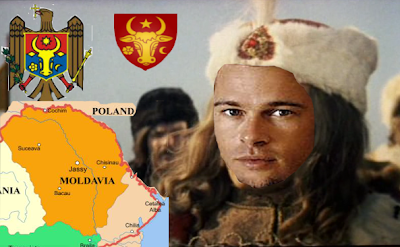How are you? We have worked together in Rostock last year. Now I'm working in Norway and I really need Bulgarian insurance and ITP.Can you give me your phone no and I call you when I get to Varna next week?
Catalin
Hy,
I am not in Varna at the moment, will be there after 16th of September, but if want I can give to you coordinates for insurance
http://www.sdi.bg/web/offices/2/ this site is for one companie, they make insurance for alot of companies, but the site is only in bulgarian, for ITP , also can give to you coordinates, but the easy way I thing is to go to some of the border crossings. Ivaylo the other colleg will be in General Toshevo is close to the border near Mangalia, he can help you, but is free only in 5 and6th of September. His German phone number is 004915788443625, he will be here 3 more days and his Bulgarian number is 00359889697699.. If you want to call today, just call after 5pm German time.
Best Regards
Martin Dyulgerov
Nessebar is one of the oldest settlements in Europe (about 9000 years). It was built over the foundations of a Thracian fishermen village, called Menabria. In VI century B.C. it becomes a colony of sailors from Ancient Greece. Nessebar has over 40 churches from different ages, 14 of which are exceptionally well preserved. One of the oldest churches is the “Basilica” on the sea-shore, built in V century A.C. Another famous monument is the St. Stefan Curch, famous for its beautiful frescos and ceramic figures of different colours on the facade of the church.
City of Melsas
Legend has it that a Thracian named Melsas would be set up settlement that would bear his name over millennia. Originally called by Thracians Melsambria or Messambria ("Bria" is the term for the confusion and fright Melsas / Messas -'s founder), the site was occupied by the Dorians in the late sixth century, during which the Greeks were beginning to venture into lands nameless warrior with wolf skulls adorned with flags, south and north of the Danube. It is also the period when settlement begins to develop rapidly. Appear first defense solid walls, temples (the biggest being that dedicated to Apollo, the patron of the ancient Nessebar), gymnasiums, theaters and even residential neighborhoods Hellenes noble origin. Three centuries later, Messambria beat his own gold drachmas and have economic ties with all the major cities-ports of the Black Sea, Aegean and Mediterranean
Romanian invasion followed since 72 BC, when the Greeks gave the city without fighting, more powerful Legionnaires. Included permanently the boundaries of the Empire, Messemvria, called novel continues to develop, the Romans bringing public baths and fortifying the existing walls. An important moment in the history of the settlement was the Roman Empire split and shift in administration Messemvriei Byzantine Constantinople. Christianity is introduced as the official religion of Byzantium and leading architects are sent to radically change the city. Then they appeared first churches, the most famous of them being St. Sophia, named after the huge cathedral in Constantinople.
Bulgarian khan Krum conquered the Messemvria in 812 Bulgarians and Slavs settle in what they had to call Nessebar. Then followed a period in which Byzantium and the Bulgarians go, one by one, under their authority, the richest Black Sea port in this part of the Byzantine Empire. Then the brothers Asen, Kaloyan especially Ionita and Bulgarian country in the same dynasty, are those which give the multitude of churches and basilicas Nessebar existing today (Nessebar is considered the city with most churches in the world relative to the number of inhabitants). Astel were erected churches of St. Paraskeva (XIII), St. Todor (XIV), St. Archangels Michael and Gravril (XIV), St. John (XIV), St. Basil (XIV ), St. Elias or Church of Our Lady in the same period, and that's to name only a few of the magnificent monuments that led to inclusion in UNESCO Nessebar.
Conquered in 1366 by Count Amed VI of Savoy, Nessebar come for centuries under the rule of the Ottoman Empire since 1453, with the fall of Constantinople. Impressed by the beautiful setting, locals sultans have never forbidden to pray in Christian churches or raise their new ones. Important to reduce, though, and with the arrival of a wave of Greek fishermen, the city is one whose economy is reduced substantially from the once thriving fishing trade, increasing vine vineyard and flax. Renaissance is one of the most preserved buildings in Nessebar, hence the medieval layout of the town and of the labyrinth or the street.
Nessebar began to flourish again with the communist period, ie in 1958, year in which the best tourist complex bases Slunchev Bryag (Sunny Beach). Perhaps not incidentally, his first works were held in the place where they were located two ancient wells that residents obtain water Nessebar. Today, tourism is the economic life support Pearl Black Sea, to the way the Bulgarian authorities were busy arranging the resort, Nessebar future can be only one worthy of its past.



























0 comentarii:
Trimiteți un comentariu